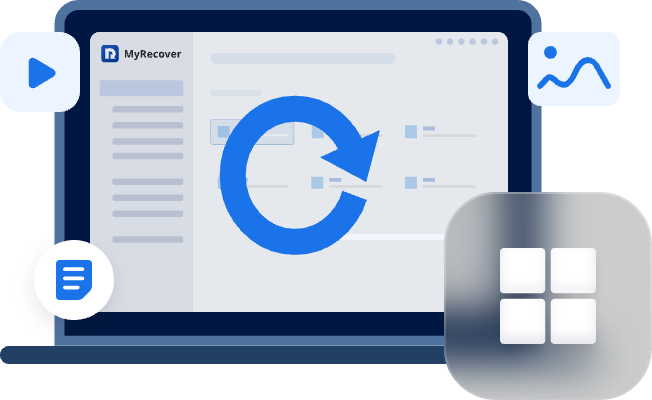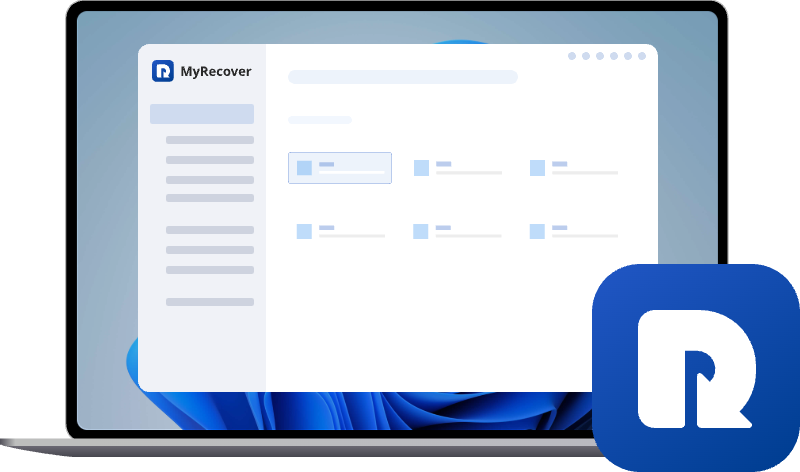[99% Success Rate] 5 Free Methods: Recover Deleted Windows Media Player Files
Accidentally deleted important media files from Windows Media Player? This guide explores multiple effective methods to recover deleted Windows Media Player files, whether they were removed directly or lost due to system issues.
About Windows Media Player Files and Where Are They Stored
Windows Media Player (WMP) is a built-in multimedia player for Windows that allows users to play audio, video, and view images. It creates a library by indexing media files from your computer, including music, videos, and playlists. While WMP does not store the actual media files itself, it organizes and references them from their original locations on your system.
By default, media files used by Windows Media Player are typically stored in the following directories:
- Music:C:\Users\[YourUsername]\Music
- Videos:C:\Users\[YourUsername]\Videos
- Pictures:C:\Users\[YourUsername]\Pictures
- Playlists:C:\Users\[YourUsername]\Music\Playlists
The WMP library database file, which stores the catalog of your media, is usually located here: C:\Users\[YourUsername]\AppData\Local\Microsoft\Media Player.
Can I Recover Deleted Windows Media Player File
I decided to use Windows Media Player as an software for my mp3 player.It recognized the mp3 player, so I was seeing some pictures the mp3 player had (through Windows Media Player), but I accidentaly deleted them.Now they are gone, and I can't find them...How can I get them back?
Yes, in many cases, it is possible to recover deleted Windows Media Player files, even if they seem permanently gone. When you delete media files, such as music, videos, or pictures, those files are typically removed from your system’s storage. Although Windows Media Player itself doesn’t have a dedicated recovery feature, the actual files it references are stored locally on your computer and can often be recovered through common methods of restoring files deleted from local hard drive.
5 Methods to Recover Deleted Windows Media Player Files
Although losing your media files can be frustrating, the good news is that there are several effective ways to recover deleted Windows Media Player files. In this section, we’ll walk you through detailed steps on how to recover deleted files from Windows Media Player, ensuring you have the best chance of getting your lost media back.
Method 1: Add Deleted Files Back to Playlist
When you delete a file from Windows Media Player, the software typically gives you two options:
- Delete from library only: This removes the entry from the Windows Media Player playlist or library, but the original file still remains on your computer.
- Delete from library and my computer: This removes the entry from the library and deletes the actual file from its storage location.
If you accidentally chose to only remove the file from the library, recovery is easy: Navigate to the default folder on your computer where media files are stored (such as C:\Users\[YourUsername]\Music or Videos). Find the deleted file in that folder. Simply drag and drop the file back into the Windows Media Player library window, and it will be added again.
However, if you selected "Delete from library and my computer", then the file was likely sent to the Recycle Bin, which requires the following recovery methods.
Method 2: Restore from the Recycle Bin
If the deleted file was located on your computer's hard drive, it might still be in the Recycle Bin.
Step 1. Double-click the Recycle Bin icon on your desktop.
Step 2. Look for the deleted media file (music, video, or picture).
Step 3. If found, right-click the file and select "Restore".The file will be returned to its original location.
Method 3: Restore via Windows File History Backup (If Turned On Previously)
If you couldn’t find the deleted media file in the Recycle Bin, especially if it was deleted from an external device such as an MP3 player or USB drive, it may have bypassed the Recycle Bin entirely. In such cases, recovery becomes more difficult, but not impossible. You can turn to Windows File History, a built-in backup feature in Windows that automatically saves versions of your files. If it was turned on, you may restore the deleted Windows Media Player file from a previous backup.
More importantly, by default, Windows File History backs up personal folders such as Music, Videos, Pictures, and Documents, which are the exact locations Windows Media Player typically references when building your media library. That means if your lost files were part of your media library, there’s a strong chance File History has a copy saved.
Step 1. Press Win+S, input "Restore your files with File History". Click "Open" under the matching result.
Step 2. Look for the deleted media file (music, video, or picture).
Step 3. If found, right-click the file and select "Restore".
Method 4: Recover By Windows File Recovery Command (Without Backup)
The abovemethod is simple, built-in, and secure, making it an excellent option if you routinely use Windows backup features. But if File History wasn'tenabled and the files have also been emptied from the Recycle Bin, don't worry since you still have a powerful recovery option.
Windows File Recovery is a command-line tool provided by Microsoft, available for free from the Microsoft Store. It allows users to recover deleted files from local drives, even when no backup exists. You can use this tool to try recovering deleted Windows Media Player files, such as music, video, or picture files, especially if they were recently lost.
- ★Tip: This tool works on Windows 10 version 2004 and later.
Step 1: Go to the Microsoft Store and download Windows File Recovery.
Step 2: Once installed, open it via Command Prompt (as Administrator) or search "Windows File Recovery" in the Start menu.
Step 3: Use the following command format to scan for deleted media files: winfr D: E: \RecoveryDestination /extensive /n *.mp4
D: = source drive (where the file was deleted)
E: \RecoveryDestination = specific destination folder on E: drive (where you want the recovered files to be saved)
/n*.mp4 = filter and only recover mp 4 files
You can replace the directory and file types based on what you’re trying to recoverand where you are recovering from.
Step 4: Once the recovery process is complete, the tool will prompt you to confirm whether you'd like to view the recovered files immediately. If you do, simply press "Y" on your keyboard to proceed.
Method 5: Third-Party GUI Windows File Recovery Tool (No Backup, No Command Line)
Windows File Recovery is a powerful fallback when no backup exists. However, because it’s command-line based, it may not be beginner-friendly. If you prefer a graphical interface, you may consider using third-party data recovery tools. Among all options, we highly recommend trying MyRecover.
MyRecover is a professional yet user-friendly file recovery software designed for Windows users. It supports recovery of deleted files from internal drives, external devices like PS4/5, drone, CCTV, music/video players, camera, USB flash drives, SD cards, and more-with just a few clicks.

- 500+ Devices Supported | SSD, HDD, USB Flash Drive, SD Sard, etc.
- 1000+ File Formats Supported | PNG, MP4, MP3, TXT, ZIP, MSG, etc.
- 500+ Data Loss Scenarios | Deletion, Format, System Crash, Virus Attack, etc.
Step 1: Free download and install MyRecover from the official website.
Step 2: Launch the software and select the drive or device where the media files were deleted (e.g., your system drive, or external USB/MP3 player if recognized)and click on "Scan".
Step 3: MyRecover offers both "Quick Scan" and "Deep Scan". For recently deleted data, the "Quick Scan" will be first executed by default. This scanning can be done within seconds. If you are trying to recover files from formatted drive, corrupted partition, or other complex cases, turn to "Deep Scan" mode.
Step 4: Once the scan completes, browse the results by file type (e.g., MP3, MP4, JPG). You can also use the Filter or Search bar to locate files by name.
Step 5: Select the deleted media files you want to recover and click "Recover". To preview the (media) files before recovery, you can upgrade to Professional edition.
Step 6: Choose a different drive to save the restored files to prevent overwriting.
Upon completion of the recovery process, a pop-up window will appear, showing the number of files successfully recovered. You can click the "Browse" button to view the recovered Windows Media Player files.
In the End
If you accidentally delete media files accessed through Windows Media Player, there are several effective methods to choose from based on your situation to recover delete Windows Media Player files. For the fastest and most reliable results, MyRecover stands out as an excellent choice. It offers both quick and deep scans, enabling you to recover files across a wide range of data loss scenarios with ease.
Apart from recovering media files, it is also able to recover many other types of files including documents, emails, photos, videos, archives, and more, making it a versatile tool for comprehensive data recovery.


